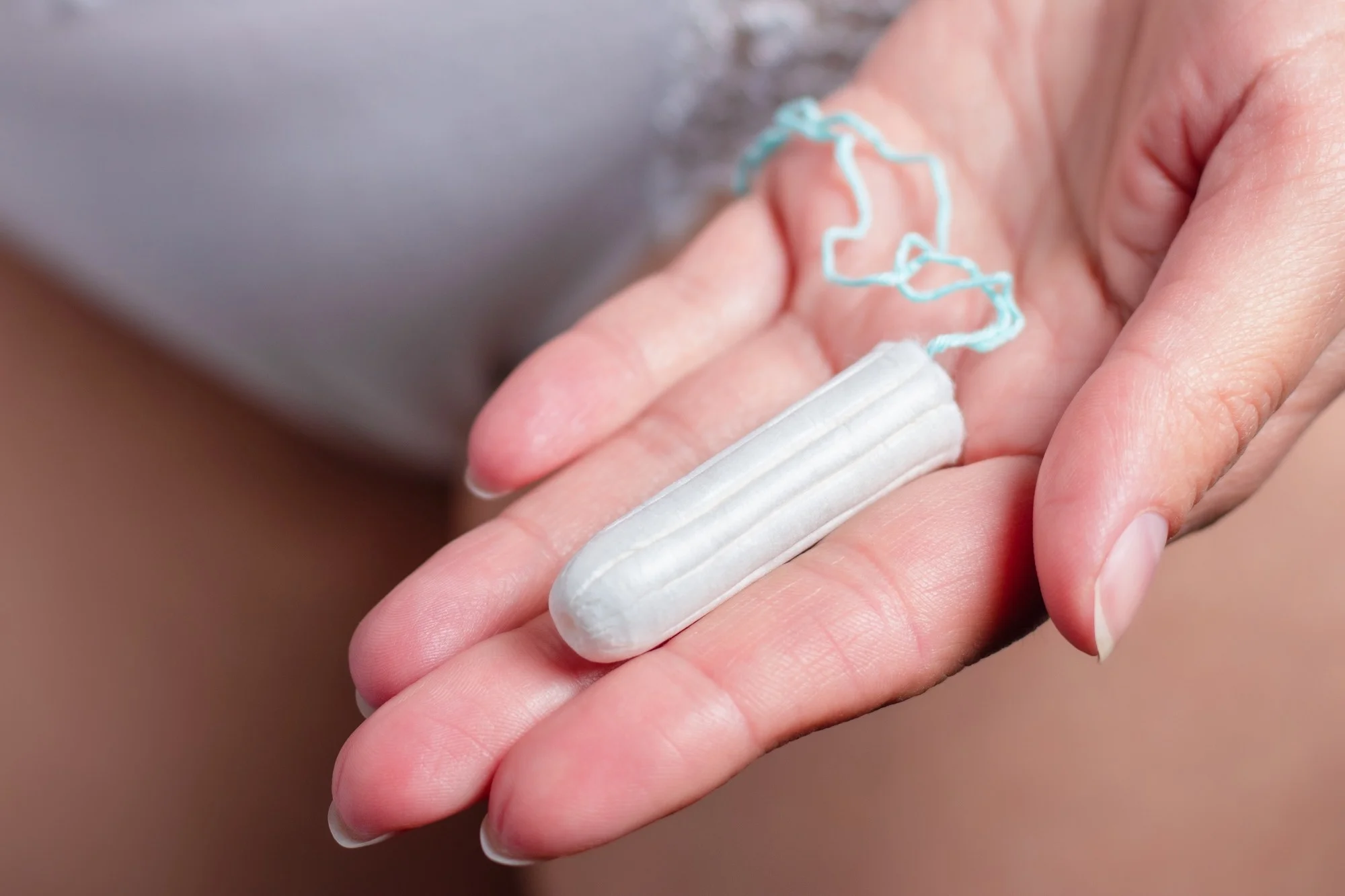Tampons, a widely used menstrual product, have been a significant convenience for women worldwide. However, recent concerns have emerged regarding the safety of tampons, specifically the presence of toxic metals. This article explores the potential health risks associated with tampons containing toxic metals, focusing on popular brands like Tampax and Playtex. By examining the production processes, health implications, regulatory standards, and alternatives, we aim to provide comprehensive information for informed consumer choices.
Understanding Toxic Metals in Tampons
Toxic metals including lead, mercury and cadmium have been detected in tampons. Some of these metals are absorbed in the body upon contact with tampon wearers. The remainder of the section will elaborate on how these chemicals are leaching into tampons, and also try to scientifically determine their frequency in tampons from brands including Tampax and Playtex.
Toxic metals in tampons are elements that can be hazardous to consumers at exposure concentrations as low as parts per billion (ppb), or lower (1 ppb = one part in 1 billion parts). Tampons can become contaminated with metal during manufacturing and due to the use of raw materials that are already contaminated with metals. In vitro measurements of trace amounts of metals in tampons have illuminated some of the sources of these metals: researchers have measured lead, cadmium and mercury in commercial tampons. Understanding how the metals used to manufacture tampons can contaminate these products, and how widespread this contamination is, is important to understanding the risks posed to consumers. This section reviews the sources of metal contamination in tampons, and the potential for these metals to accumulate in the human body over time.
A study from 2009 found these toxic metals to be present in tampons by popular brands such as Tampax or Playtex. This study, along with others, has suggested that there is significant variability in terms of contamination of different brands and types of tampons. Tampon brands and types tested generally contained varying levels of TIN, LEAD and CADMIUM 15 times the WHO standards (see Table below). Often various types of the same brand have been included in this testing to suggest that they have different levels of contamination.This variability highlights the importance of good manufacturing practice and quality control in tampon manufacture. By looking into specific examples of contamination as we have done for examples of encouraging and soulful advertisements, and proceeding by virtue of examples, not with the naive belief that all tampons found to be contaminated are unsafe but rather in virtue of these claims, their ability to deliver corporate messages, we can better understand the scope of contamination. Furthermore, looking at specific cases can help us evaluate the responses of tampon companies to these claims, and to shed light on whether or not they are taking action.
Health Implications of Toxic Metals in Tampons
Being inside a tampon, the toxic metals are absorbed readily, potentially causing a spectrum of health problems from acute mild to chronic severe disorders. This section provides literature review and expert opinions about health problems caused by exposed toxic metals during tampon use.
Depending on the metal involved, health effects of toxic metals in tampons may include neurological issues, reproductive problems and developmental delays (eg, lead); kidney damage, cognitive impairments and immune system disruptions (eg, mercury); bone damage and lung damage (eg, cadmium) – and still others. ConsumerProductSmart held focus groups asking women about tampons. In preliminary data released in 2019, it was found that 78 per cent of the women surveyed said that it was never mentioned on packaging that toxic metals can be absorbed into the body through the vagina. Those female consumers who know of toxic heavy metals and their associated health risks may be choosing to abstain from using products with toxic metal-containing absorbent products. When you factor in intimate proximity to the vagina’s mucous membranes, which can increase metal absorption, such metals pose a particularly distal risk as long as they sit in a plugged vagina.
While tampons have proven essential for many women, scientific research has increasingly shown that chronic exposure to low levels of toxic metals while using tampons may not be good for one’s health, with the potential for long-term health impacts. As compiled in existing literature reviews, these studies are cited to suggest that, especially after chronic longterm exposure in such repetitive applications as using tampons, metallic materials may accumulate in the human body and thus have a lasting impact on one’s health. This article will review these studies (and some expert opinions) and further emphasise the necessity of research and more awareness about this topic. Consumers, especially menstruating women, should be aware of these health considerations and, as a result, make more informed decisions about the menstrual products they use. Or they can, together, push for other safer alternatives.
Regulatory Standards and Safety Measures
Standards regulating the safety of consumer products – including tampons – are meant to be set and enforced by regulatory bodies, and this next section will analyse these standards, the extent to which they are currently adequate, and whether enhanced legislation is necessary to regulate toxic metals.
Because menstrual products are regulated in varying degrees and at different levels of government around the world, and because the specifics of regulation can be complex, this section attempts to clarify the regulatory authority in the US (the only jurisdiction for which data and details are readily available), specifically regarding menstrual products, tampons, and consumer safety. First, let’s briefly consider product safety in the US. Tampons in particular are overseen by the Food and Drug Administration (FDA), a subdivision of the federal government that does not regulate sporting goods, ice-skating rinks or even knee pads, but it does set rules that manufacturers must follow when introducing a consumer product onto the market. But what about what-goes-inside-a-tampon? Some of us wonder about the safety of its contents. Unfortunately, the rules for the safety of tampons mainly concern themselves with Toxic Shock Syndrome (TSS) and not toxic metals. We will outline the regulatory framework and identify the gaps, but our focus is on TSS because we can reasonably assess whether current rules regarding tampons are sufficient to protect us.
These concerns have recently been magnified by new research that found heavy metals in tampons, causing consumer action groups and other organisations to speak out and encourage better regulation. Much has been said about the safety of these regulations, with many experts claiming that they are inadequate to protect consumers against metal exposure. This section will focus on the efforts of different organisations to raise awareness around the issue and encourage stricter regulations, as well as the means through which tampon producers, such as those at Tampax and Playtex, are trying to adhere to the current regulations in order to promote product safety.
The Role of Tampon Companies
Tampon companies can and must do better when it comes to ensuring their products are safe and of quality. In this section, we’ll look at the role of large tampon manufacturers, including Tampax and Playtex, in addressing the presence of toxic metals, and their efforts towards greater transparency and consumer trust.
The major tampon makers Tampax and Playtex (now owned by Edward Don Company, the largest supplier of food service products in the US) dominate the morning. Clearly what they do and how they do it matters. Over the past decade, they’ve also come under growing scrutiny for toxic metals in their products. Some have publicly addressed the issue, aiming to improve product quality and raise the bar in transparency about their materials. This part of the chapter will discuss Tampax and Playtex actions upon metal contamination, including voluntary product testing and safer sourcing.
An important aspect in retaining consumer loyalty is open discussion and full disclosure about product safety, and the ingredients in menstrual products. After the revelations of the 1990s, tampon companies continue to evolve how they communicate with the consumer such as improved labelling and disclosure of their product return and tampon testing results through Creative Commons Licensing. How have turbulent times with products deemed unsafe created greater consumer awareness and demand for consumer feedback from the manufacturers, and how did social media raise product safety issues?
Alternatives to Conventional Tampons
With rising concerns about the safety of conventional tampons, many women are seeking safer alternatives. This section will explore various alternative menstrual products, such as organic tampons, menstrual cups, and reusable pads, and their potential benefits and drawbacks.
Organic tampons have gained popularity as a safer alternative to conventional tampons. Made from organic cotton, these tampons are free from synthetic materials and potentially harmful chemicals. Many consumers believe that organic tampons reduce the risk of toxic metal exposure and other health issues. This section will explore the benefits of using organic tampons, including their environmental impact and potential health advantages. By comparing them with conventional tampons, we can better understand why many women are making the switch.
Menstrual cups and reusable pads are other popular alternatives to conventional tampons. Menstrual cups, made from medical-grade silicone, offer a reusable option that reduces waste and potential chemical exposure. Reusable pads, often made from organic cotton or bamboo, provide a comfortable and eco-friendly alternative. This section will discuss the benefits and challenges of these products, including their cost-effectiveness and learning curve for new users. By exploring these alternatives, consumers can find the menstrual product that best suits their needs while minimizing health risks.
Consumer Advocacy and Future Directions
The role of consumer advocacy is very critical in bringing change in menstrual products industry. This part will explain the crucial of consumer awareness and raised voices towards challenging the toxic metals found in menstrual product manufacturer and make a switch to safer product.
Consumer advocacy champions the interests of individuals in the marketplace, often serving as a spur to encourage manufacturers to make their products safer or to reveal hidden dangers. In terms of tampons, advocacy groups not only made consumers aware of the problem of toxic metals, but also lobbied regulatory agencies to put teeth into the law and to demand that the industry make improvements. This section will explore how advocacy efforts have spurred regulatory action and easier industry compliance with accountability for safer products. Profiling these advocacy campaigns sheds light on the role played by consumer voices in the marketplace of menstrual products.
Moving forward, the continued efforts of consumer advocates and academics will be instrumental in keeping menstrual products safe. More broadly, we can expect progress toward greater testing for toxic metals in various menstrual products, greater transparency on the components of tampons, and the creation of safer alternatives. This section will discuss where we might be headed in our industry and why consumer education and engagement remains a crucial factor. Stay informed and you’ll be a powerful advocate for a safer and more transparent range of period products.
Conclusion
The presence of toxic metals in tampons is a significant concern that requires attention from consumers, regulatory bodies, and tampon companies. By understanding the sources and health implications of metal contamination, we can advocate for safer products and better industry practices. With continued consumer awareness and advocacy, we can work towards a future where menstrual products are free from harmful substances, ensuring the health and well-being of women worldwide.




